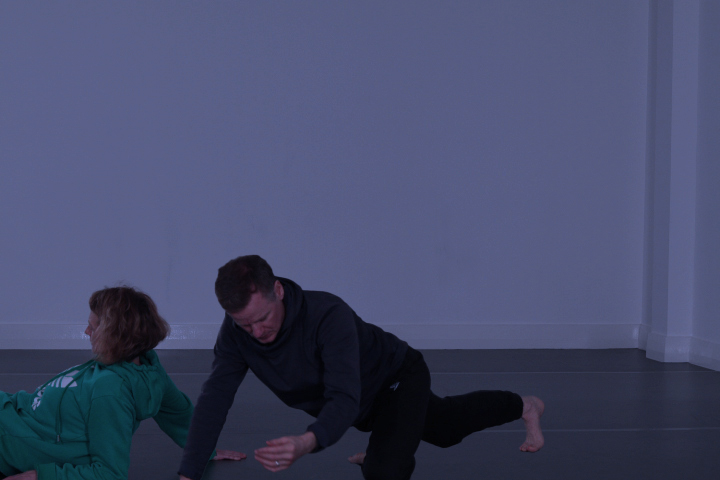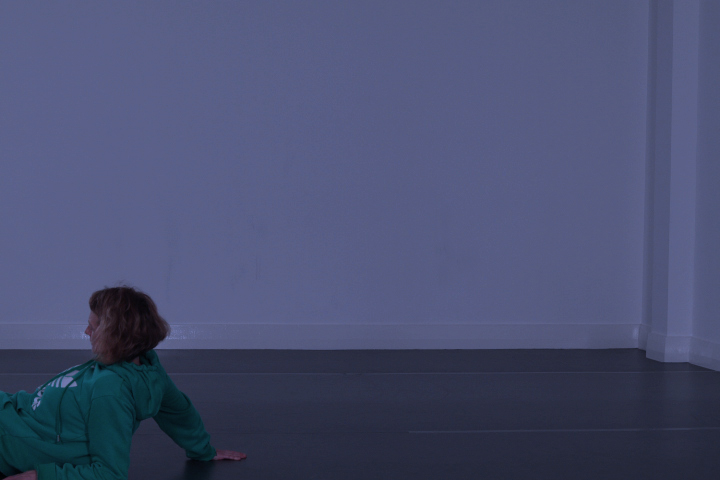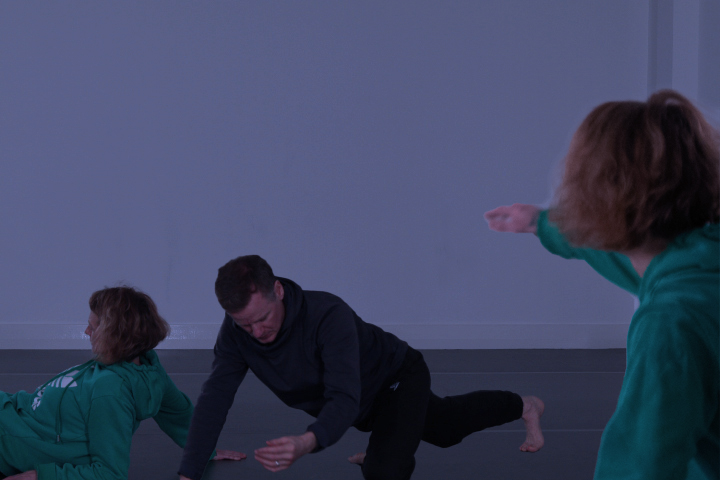Some more video but this time two separate video streams (one of Katye Coe, one of me (Simon Ellis)) placed side by side on the canvas. Two notes: i) I made no effort to match them or shift them in time; ii) the video is not slowed down at all.
Tag: post-production
-
shimmer again (video)
My colleague Heinrich Escano has been playing a bit more with using motion extraction from the simple footage taken from a still video camera (although in this clip there are some still images as well).
In this sample there are three different things to look at:
1) you can see what happens when there is movement in only one part of the body (the rest of the body effectively disappears);
2) motion extraction of a timelapse series of still images – this is the brief moment 19 seconds in
3) a simple moment in the last part when Heinrich increases the size of the image to simulate zooming in on Katye sitting
As I am watching I am increasingly drawn to how the motion extraction broadens my gaze across the entire body. That is, it asks me to see movement as a whole body activity even when there is the smallest quantity of movement happening. At a stretch I’d propose that this mirrors my attention when dancing – the kind of attention that absorbs the body as an entire field of energy.
-
shimmer
I’ve mentioned before in data data data and in low fidelity documentation just how complex the ways in which some of the practical work in the studio might be documented and shared.
A while back I happened across a simple post-production technique called motion extraction by the YouTuber Posy. It made me think that it might be a way to reach towards just how much movement is going on when it seems like very little is happening.
My colleague Heinrich Escano is a video artist and was keen to have a go. Here’s a brief sample of Katye Coe practising our version of authentic movement in the studio:
What I find most interesting is how the body seems to start to shimmer when there is next to no movement happening. I find my attention drawn in very closely to those actions and stillnesses. It’s not precisely what I am imagining but it’s a good first test or prototype.
-
data data data
Just as a strange kind of wtf there are approximately 36000 photos from 10 days of studio practice, and a rude quantity of video footage. All photographs were taken as part of timelapses so the framing is effectively arbitrary and designed to cover the space.
I’ve mostly resisted thinking too much about what I might do with the photos and videos but here are two images from yesterday (13 March 2024) presented as a single image. Katye and I never danced together but it’s very easy to create masks for the photos and then populate a single image with 2 (or 1000s) of figures. Note that I also added a blue filter to the images.

Here’s the original of just Katye:

And then here’s an composition with a second image of Katye (this time the mask isn’t so crisp) taken from a different perspective. Curious to note (even with these knocked together images) just how different it is when there are two versions of the same person in the image — that it immediately is recognisably “photoshopped”.
